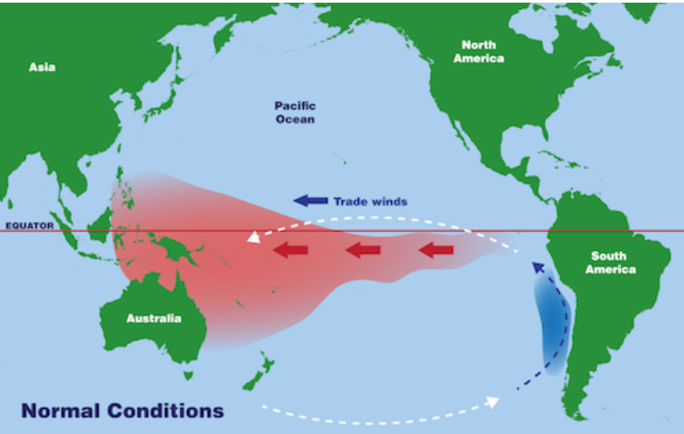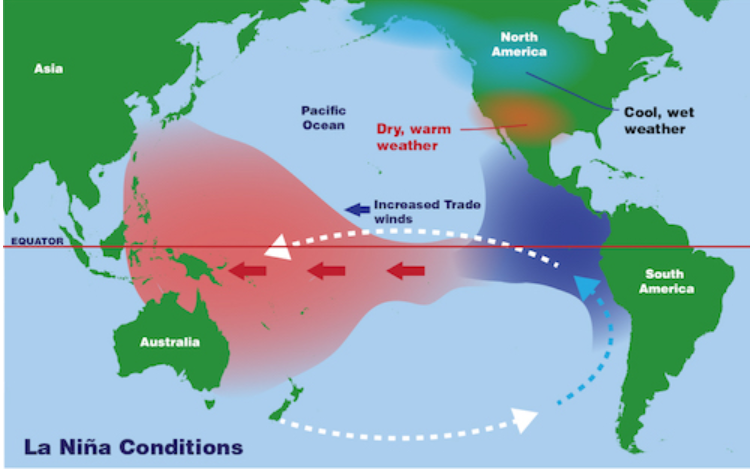How does La Niña affect India’s climate?
(Source – The Hindu, International Edition – Page No. – 10)
| Topic: GS1 – Geography |
| Context |
| ● La Niña, a cooler Pacific Ocean phase, influences global weather, including robust monsoons and colder winters in India.
● Despite predictions, La Niña has not emerged in 2024, raising questions about its impact on weather and air quality. ● Its absence also highlights evolving climate patterns influenced by ENSO phases and climate change. |


What is La Niña?
- La Niña is a phase of the El Niño Southern Oscillation (ENSO) characterized by cooler-than-normal sea surface temperatures in the Pacific Ocean between Indonesia and South America.
- Its counterpart, El Niño, represents warmer-than-normal temperatures in the same region.
- La Niña typically brings normal or above-normal rainfall to India, causes droughts in Africa, and intensifies Atlantic hurricanes.
- Conversely, El Niño leads to extreme summers and droughts in India but increases rainfall in the southern United States.
- Climate change is expected to increase the frequency and intensity of both La Niña and El Niño events, potentially amplifying extreme weather patterns.
Current Status of La Niña
- La Niña, expected to emerge by July 2024, has not materialized yet.
- Historically, La Niña typically forms during the monsoon or pre-monsoon periods, with only two occurrences between October and December since 1950.
- As of December 2024, there is only a 57% chance of its emergence, and even if it does form, it is likely to be weak.
- Oceanic Niño Index (ONI) values, currently around -0.3º C, need to drop below -0.5º C for at least five consecutive three-month periods to confirm a La Niña event.
Meteorological Implications
- Southern Indian cities like Bengaluru and Hyderabad are experiencing colder winters, while north India faces delayed and warmer winters.
- La Niña winters generally feature colder nights, higher daytime temperatures, faster wind speeds, and a lower planetary boundary layer height (PBLH).
- Lower PBLH could trap pollutants near the ground, worsening air quality, but faster winds might disperse them.
Impact on Monsoons and Heatwaves
- El Niño often disrupts monsoons, with India receiving below-average rainfall during most El Niño years.
- La Niña promotes robust monsoons, as seen in 2020-2022, which brought above-normal rainfall.
- If La Niña persists into 2025, it could mitigate heat waves and improve monsoon rainfall.
| PYQ: Drought has been recognised as a disaster in view of its party expense, temporal duration, slow onset and lasting effect on various vulnerable sections. With a focus on the September 2010 guidelines from the National disaster management authority, discuss the mechanism for preparedness to deal with the El Nino and La Nina fallouts in India. (200 words/12.5m) (UPSC CSE (M) GS-3 2014) |
| Practice Question: Examine the significance of La Niña in shaping India’s weather patterns, including its effects on monsoons, winters, and air quality, while assessing the implications of evolving ENSO phases in the context of climate change. (250 Words /15 marks) |


